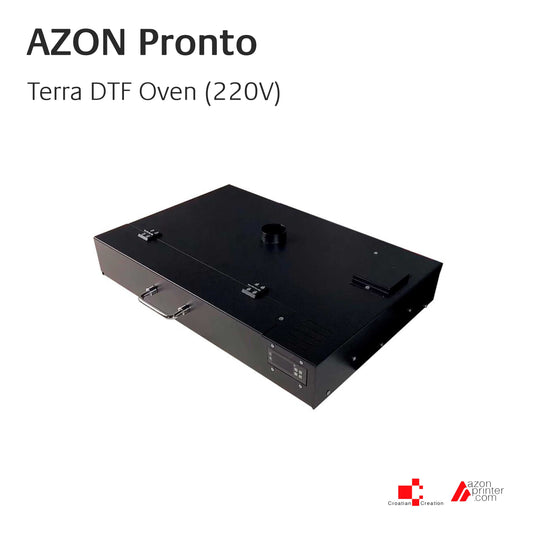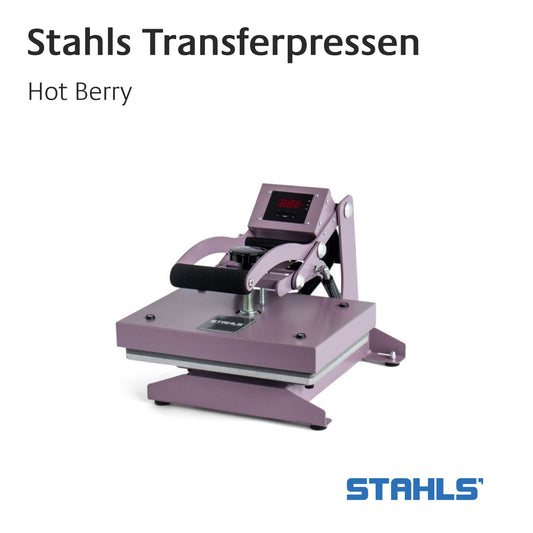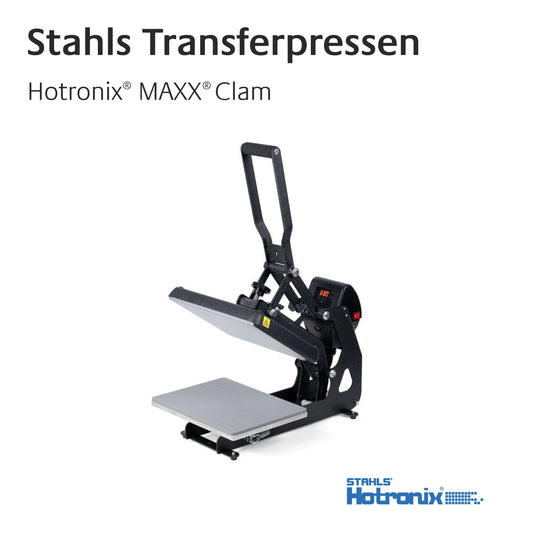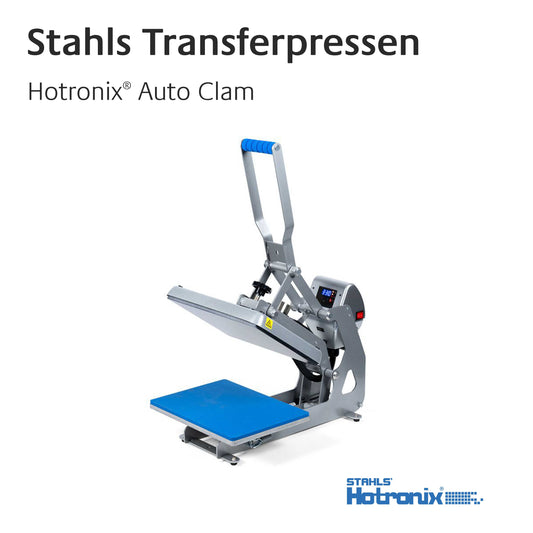Collection: DTF / DTG accessories
Selected DTF & DTG accessories
DTF, DTG, GTG, FYI, OMG... so many acronyms, so little time. Jokes aside, DTF (Direct-to-Film Printing) and DTG (Direct-to-Garment Printing). Here you will find accessories for each process.
-
Neolt XY DTF Cutter
Regular price From € 186,00Regular priceUnit price / per -
Azon Pronto - Terra DTF oven
Regular price € 480,00Regular priceUnit price / per -
DuPont™ Artistri® Premium DTF Inks
Regular price From € 63,00Regular priceUnit price € 80,00 / per l€ 95,00Sale price From € 63,00Sale -
DTF Accessories - Orbital Rotation Shaker
Regular price € 199,00Regular priceUnit price / per -
Fiery CADlink Digital Factory 11 - Direct to Film Desktop Edition
Regular price € 445,00Regular priceUnit price / per -
Fiery CADlink Digital Factory 11 - Direct to Film Edition
Regular price € 945,00Regular priceUnit price / per -
Fiery CADlink ADD-ON - ICC profiling
Regular price € 795,00Regular priceUnit price / per -
Fiery CADlink ADD-ON - Ricoh DTG Printer Driver
Regular price € 300,00Regular priceUnit price / per -
Fiery CADlink ADD-ON - Ricoh DTF Printer Driver
Regular price € 300,00Regular priceUnit price / per -
Fiery CADlink ADD-ON - Contour Cutting Module
Regular price € 395,00Regular priceUnit price / per -
Fiery CADlink Digital Factory 11 - OKI Pro Edition
Regular price € 895,00Regular priceUnit price / per -
DuPont™ Artistri® Premium DTF Inks
Regular price From € 540,00Regular priceUnit price € 90,00 / per l -
DuPont™ Artistri® Premium DTG-Tinten
Regular price From € 100,00Regular priceUnit price € 10,00 / per l€ 500,00Sale price From € 100,00Sale -
Vipro - Transfer Pulver
Regular price From € 19,00Regular priceUnit price € 40,00 / per kg€ 26,00Sale price From € 19,00Sale -
 Sale
SaleEMV - ATT-Laserfolie
Regular price € 80,00Regular priceUnit price / per€ 148,00Sale price € 80,00Sale
transfer presses
The RGF sells Stahls and Hotronix® transfer presses exclusively in bundles with Ricoh/Azon DTF and DTG printing systems
-
Stahls Transfer Press - Hot Berry
Regular price € 349,00Regular priceUnit price / per -
Stahls Transfer Press - Clam Basic
Regular price From € 460,00Regular priceUnit price / per -
Stahl's transfer press - Hotronix MAXX Clam
Regular price From € 785,00Regular priceUnit price / per -
Stahls transfer press - Hotronix Auto Clam
Regular price From € 1.099,00Regular priceUnit price / per
-

DTF - Direct-to-Film
What is DTF printing?
Direct-to-film printing is a relatively new technique that is growing in popularity. DTF prints have excellent color accuracy and detail, are durable, and look fantastic. Other benefits of DTF printing include low production costs, a wide range of color options, and the ability to print on dark and light garments. It is also suitable for various material types such as polyester, cotton, nylon, and fleece.
How does DTF printing work?
Here are the basic steps of DTF printing:
- The design is printed with water-based ink on a special transfer film.
- The ink on the film is then coated with a special adhesive powder.
- The design is then transferred to the fabric using a heat press.
While the process seems lengthy and involves several steps and actions, printing a garment only takes a few minutes.
-

DTG - Direct-to-Garment
What is DTG printing?
With direct to garment printing, the ink is sprayed directly onto the garment, allowing for high-quality, full-color prints. DTG prints are soft, breathable, and very durable. DTG printing is best suited to fabrics such as cotton, bamboo, and other natural materials because the material absorbs the ink. DTG is one of the most popular printing methods in on-demand production.
How does DTG printing work?
Unlike DTF printing, the DTG process requires fewer steps to print the design onto the garment. There are a few slightly different but very similar ways to print a DTG product. The technology and process we use is as follows:
- First, the garment is placed on a printing roller. Then a special pre-treatment is carried out to create a bond between the fibers of the fabric and the ink.
- The water-based ink is then sprayed directly onto the wet, pre-treated surface to create the design. The drops of different colored ink are sprayed at very precise coordinates to create the unique colors and details of your image.
- The garment is then carefully removed from the printing plate and placed in a dryer to allow the pre-treatment to evaporate and the ink to harden, creating a durable final print.
The main advantage of DTG printing is that it is easy to print unique items as there is almost no set-up time. Printing a t-shirt only takes a few minutes and the production cost is also low.
-
DTG vs. DTF printing:
What are the differences Although both printing processes seem quite similar at first glance, there are some key differences. Both printing processes produce great results, but there is more to them than meets the eye.
-
print quality and durability
The print quality of DTF is excellent. Although the print may feel a little stiff and plasticky at first, it will wear off after a few washes. Otherwise, DTF prints are smooth and elastic, which ensures their longevity. The prints are resistant to cracking and can withstand heavy use and cold to lukewarm washing without the color fading. However, the design may develop small cracks if garments are washed in very hot water.
The DTF process is great for printing photos, colorful designs, graphics and artwork. The results are amazing because the ink doesn't soak into the fabric, but is pressed onto the fabric. The print is very thin so it doesn't feel bulky.
-
DTG printing also offers fantastic print quality with a light feel. A fresh print may feel a little rough at first, but after a few washes it will become smooth again. The DTG process is great for printing colorful designs, graphics, text, and more. These prints always look great, but some factors can affect the outcome of the print. For example, as the fabric soaks up the ink, the print may be less vibrant, especially on black or colorful garments. If you follow the care instructions of the printed garment, the prints will last a long time. They will not crack or peel. However, over a longer period of time (and after many, many washes), the colors may lose some of their vibrancy. However, the prints will remain completely intact. You will be surprised at how durable these prints are!
-
complexity
When it comes to the complexity of printing, DTF prints are unmatched. DTF prints support photos, detailed, full-color designs, artwork, small texts, graphics, and more. The prints are sharp, clear, and realistic, making them very close to the original design. In addition, you can also print gradients. However, keep in mind that the base of DTF printing (the last layer of color) is made of white ink, which may affect the gradient or transparency of your design.
-
DTG prints are also suitable for colorful designs, graphics, photos, artwork, small text and more. These prints are vibrant, clear and detailed. However, keep in mind that the fabric will absorb the ink, which can affect the clarity of the design. It is also difficult to print gradients with DTG, so you should keep them to a minimum and make sure your design is adjusted accordingly. You can learn more about transparency in DTG printing here.
-
color brilliance
DTF printing uses primary colours (known as CMYK or cyan, magenta, yellow and black) and white ink as a base. Each design will be vibrant and lively regardless of the colour or type of fabric. DTG printing is also based on the CMYK colour model, with our in-house technology also using red and green (CMYKRG). Prints are backed with white ink, but only if the design is printed on black or coloured garments. White ink is not used for printing designs on white fabrics. As the ink is sprayed directly onto the fabric, it will soak up some of the colour. Therefore, the vibrancy of the print depends on the absorbency of the product and can vary between different product types. For example, prints on some more demanding garments may not be as bright and vibrant as DTF printing. However, DTG can still produce great prints!
-
suitability of the fabric
One of the advantages of direct foil printing is that it can be printed on various fabrics. This flexible printing method can be applied to polyester, cotton, fleece, nylon and other blended fabrics. The material does not affect the printing, so you can design more product options for your store. Unlike DTF printing, DTG printing is best suited for natural fabrics such as cotton, bamboo, linen or such blended fabrics. This is because the ink bonds better to the fibers of natural fabrics than to synthetic fabrics. However, DTG can also print on many products made from cotton blends that contain synthetic fibers. This allows DTG to still serve a wide and diverse range of products.
-
Crowd
If you are looking for a printing technique that is suitable for print-on-demand production, DTF printing is a good option. It is possible to print just a single t-shirt or make a bulk order of t-shirts; therefore, it fits well with the on-demand production model. The same goes for DTG technology - it is perfect for both small and large orders. DTG is one of the most popular printing methods among dropshipping companies because it is easy to use this printing technique for as many orders as needed.
-
environmental friendliness
If you are looking for a sustainable fulfillment method, DTF printing is a great choice. This technique allows for the printing of one-off pieces, so you don't have to worry about unsold inventory. Being able to produce products on demand also avoids overproduction. The inks used in direct foil printing are water-based and non-toxic, so they are environmentally friendly. The transfer foil used for the design is usually recyclable, so there is usually no waste in the printing process. DTG is also a great option if you are looking for an environmentally friendly fulfillment method. Waste in the entire process is very low. Like DTF printing, the DTG technique allows you to print one-off pieces. Making products on demand avoids overproduction, as you can order exactly the amount of products that are ordered.


























